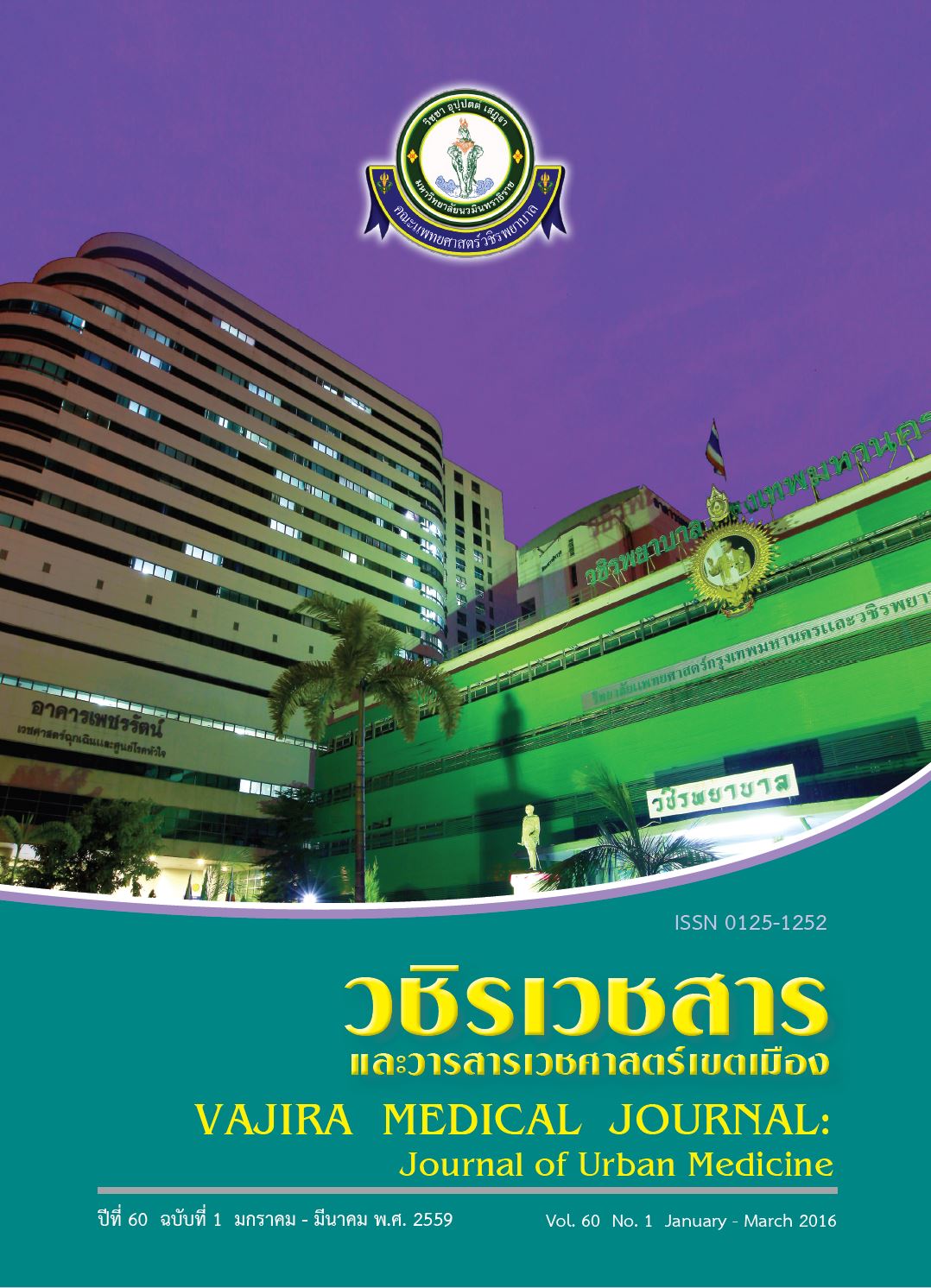The mucociliary function and nasal obstructive symptoms in allergic rhinitis patients
Main Article Content
Abstract
Objective: Allergic rhinitis is a common disease in Thailand with a high risk of inflammations and infections. It may alter protective mechanism of nasal mucosa and mucociliary function after symptom was detected. Mucociliary function has not been previously studied in allergic rhinitis patients according to nasal obstructive symptoms.
Methods: Allergic rhinitis patients were separated into obstructive (O) and non-obstructive (NO) groups by VAS score (subjective assessment) and acoustic rhinometry (objective assessment). Mucociliary clearance time (MCT) was used to evaluate mucociliary function in allergic patients with and without nasal obstruction. This study was performed in outpatient clinic, Department of Otolaryngology, Faculty of Medicine Vajira Hospital, Navamindradhiraj
University.
Results: Using VAS score, there was no difference in mean value of MCT between group O and NO. However, when separate between group O and NO by acoustic rhinometry, MCT was significantly higher in group O. Allergic rhinitis patient with nasal obstruction may have increased mucociliary clearance in order to clear secretion in the nose. This may be defensive mechanism to protect from infections.


